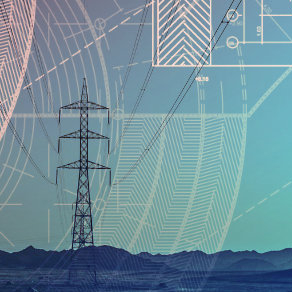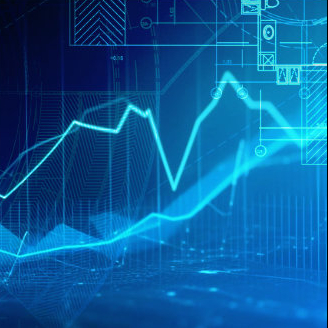
“Producers get more money and consumers pay less for their electricity,” Hendrik Vollrath, senior algorithmic power trader at RWE Supply & Trading GmbH, sums up the chief benefits of algo-trading. That sounds simple enough, but does algo-trading really pay off for the average energy company?
Algo-trading on the rise
In recent years, algorithms have become a common tool on energy exchanges. Algo-trading - the use of algorithms to trade electricity - is easier, more secure and more efficient than conventional trading. Algorithmic software can process vast amounts of market data, carry out several trades in an instant and make split-second decisions based on multiple variables. And it does all that without making mistakes or getting emotional; two factors that characterize human trading, often causing losses rather than generating profits. Energy trading, however, is not an end in itself. Put bluntly, the goal of trading energy is to help producers and consumers ensure that power ends up where it needs to be. Algo-trading can assist them in making that happen in an efficient manner.
Due to the rise of volatile power sources such as wind and solar energy, the electricity grid’s balance of supply and demand is more precarious than before. To maintain it, increased speed is required, especially in short-term trading on intraday markets that have emerged as a result of the considerable growth in renewable energy production. Algo-trading can offer that speed and bring with it more efficient and more liquid markets where trading is possible around the clock. An algorithmic trading solution can optimally manage trading volumes, both small and large, even minutes before delivery, and quantify positions that are constantly changing. Orders are commonly handled via application programming interfaces (API) and algo-trading is fully integrated into the energy trading platform.
Making the most of robots
There has been extensive research on intraday trading in recent years, but most of it has focused on (un)predictability and what causes prices to change. What has been largely ignored is how trades can be executed optimally, even though it is an issue that every energy company has to deal with. Whether it’s due to power outages, renewable energy generation or trading decisions, order books are full of volumes that need to be traded. But how? Trade everything at once? Slice the volume into small portions? Wait for a more opportune moment when prices are more attractive? As a study published by University Duisburg-Essen has shown, optimal execution strategies have a significant monetary impact. But such optimization is beyond the capabilities of a human trader - it requires an algorithm.
If we flick through the 2020 annual reports of Nord Pool and EPEX SPOT, Europe’s two leading power exchanges, we can find proof in the numbers. Last year, the percentage of trading undertaken by an API was 59% and 76%, respectively. In other words, your competitors are already doing it. And as trading volumes increase and lead times decrease, algo-trading will continue to gain significance. A growth in volumes traded, however, may not by itself justify the cost of algo-trading, as the more cautious traders will point out.
Algorithms as a business opportunity
Imagine that a power production unit unexpectedly needs immediate maintenance. Even if it’s only a half hour period, the trading team has to drop everything and try to trade the changed position at once in order to minimize the losses that may be caused by the particular player’s inability to produce power, or by already committed delivery and balance positions. It’s simply impossible for human traders to react and trade efficiently in these circumstances, while an algorithm can easily meet this challenge and conduct large amounts of trade within minutes. The smaller your trading team, the more such maintenance events cost. Enter algo-trading, however, and even if you only have two hours of this type of unplanned outage in a year, the algo-trader will pay for itself - according to the modeling results we gained from constructing a scenario with a 180 MW capacity power plant optimized to trade on exchanges as well as capacity reserve services, i.e. not producing power at 100%.
There are other plausible scenarios traders should consider and be prepared for. Whether it’s updated consumption (e.g. a drop in temperature triggers the demand for heat), revised renewable generation forecasts (e.g. regarding solar radiation or wind speed) or speculative trading approaches (e.g. exploiting under- or overpriced moments with lightning speed) the end result is the same as above: because your human traders are unable to cope, you run the risk of losing money. An algo-trader, however, is unfazed by what we humans see as unfavorable circumstances - it’s all just business as usual for an algorithm.
Besides supporting more assets with the same number of traders - as well as eliminating night shifts - algo-trading can save costs. By its very nature, it can take advantage of every favorable opportunity that presents itself. Your human traders, meanwhile, can focus on the bigger picture and explore or revise trading approaches, and analyze overall market developments - valuable activities that aren’t suited to algo-traders. This allows traders to continually improve their strategies and find new ways to increase profit. Could anyone wish for a stronger business case?




